セマンティック・セグメンテーション(MMSegmentation のインストールと動作確認)(PyTorch,Python を使用)(Windows 上)
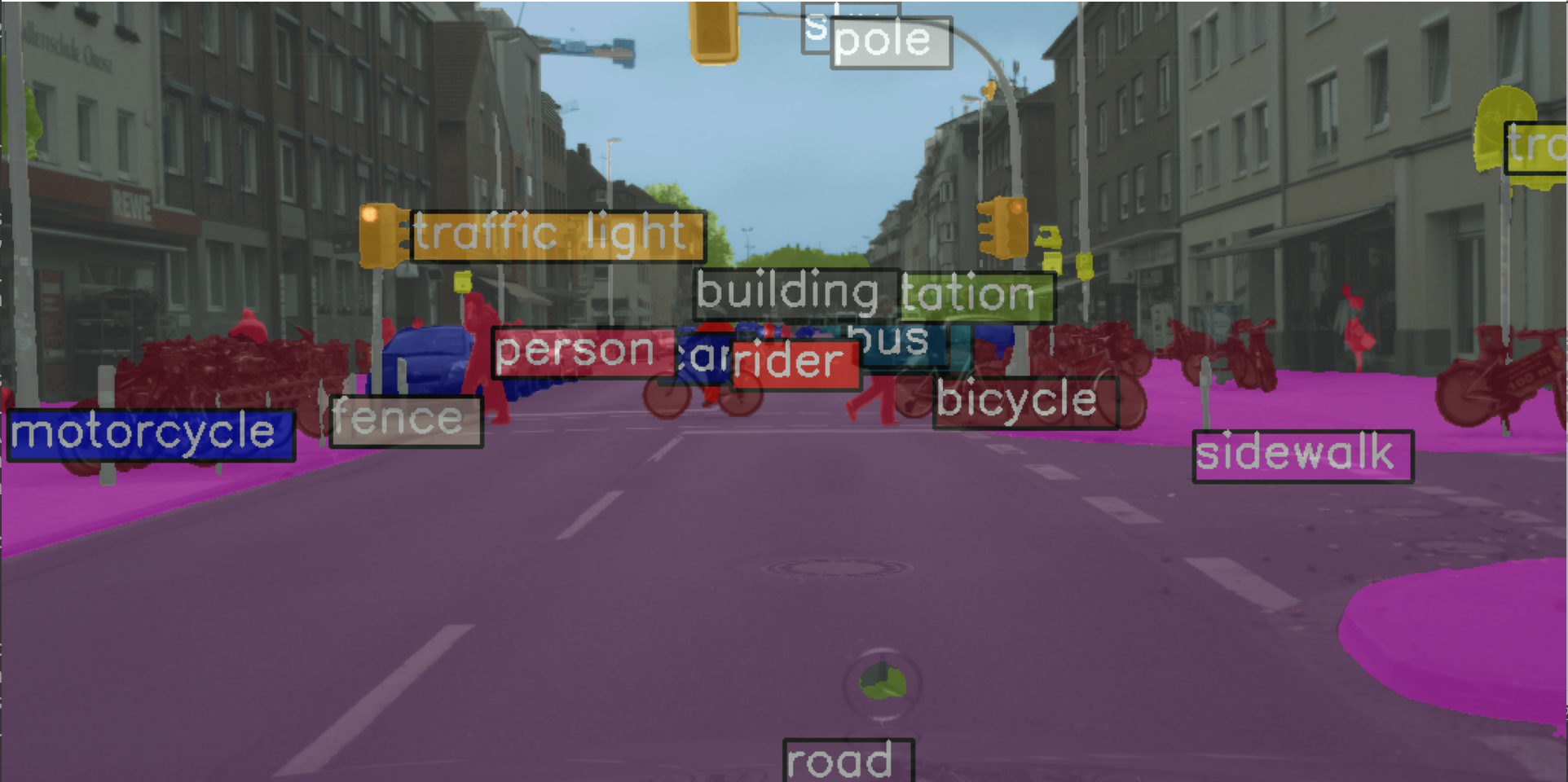
【目次】
MMSegmentation
MMSegmentation は, OpenMMLab の構成物で,セグメンテーションの機能を提供する.
【文献】
MMSegmentation Contributors, MMSegmentation: OpenMMLab Semantic Segmentation Toolbox and Benchmark, https://github.com/open-mmlab/mmsegmentation, 2020.
【関連する外部ページ】
- MMSegmentation の公式ドキュメント: https://mmsegmentation.readthedocs.io
- MMSegmentation の訓練,検証,推論の公式チュートリアル: https://github.com/open-mmlab/mmsegmentation/blob/master/demo/MMSegmentation_Tutorial.ipynb
- MMSegmentation の公式の学習済みモデル: https://mmsegmentation.readthedocs.io/en/latest/model_zoo.html
前準備
Build Tools for Visual Studio 2022 (ビルドツール for Visual Studio 2022)または Visual Studio 2022 のインストール(Windows 上)
【インストールの判断】 Build Tools for Visual Studio は,開発ツールセットである. Visual Studio は統合開発環境であり,いくつかの種類があり,Build Tools for Visual Studioの機能を含むか連携して使用するものである.インストールは以下の基準で判断してください:
- Build Tools for Visual Studio の機能のみが必要な場合
- Visual Studio の機能が必要である,あるいは,よく分からない場合
Visual Studio 2022 をインストールする際に,「C++ によるデスクトップ開発」を選択することで, Build Tools for Visual Studio 2022 の機能も一緒にインストールされる.
不明な点がある場合は,Visual Studio 全体をインストール を行う方が良い.
Build Tools for Visual Studio 2022 のインストール(Windows 上)
- Windows で,管理者権限でコマンドプロンプトを起動(手順:Windowsキーまたはスタートメニュー >
cmdと入力 > 右クリック > 「管理者として実行」)。次のコマンドを実行
次のコマンドは,Build Tools for Visual Studio 2022と VC2015 再配布可能パッケージをインストールするものである.
- Build Tools for Visual Studio 2022 での C++ によるデスクトップ開発,CLI,ATL,MFC のインストール(Windows 上)
- Visual Studio Installer の起動
起動方法: スタートメニューの「Visual Studio Installer」を選ぶ.
- Visual Studio Build Tools 2022 で「変更」を選ぶ.
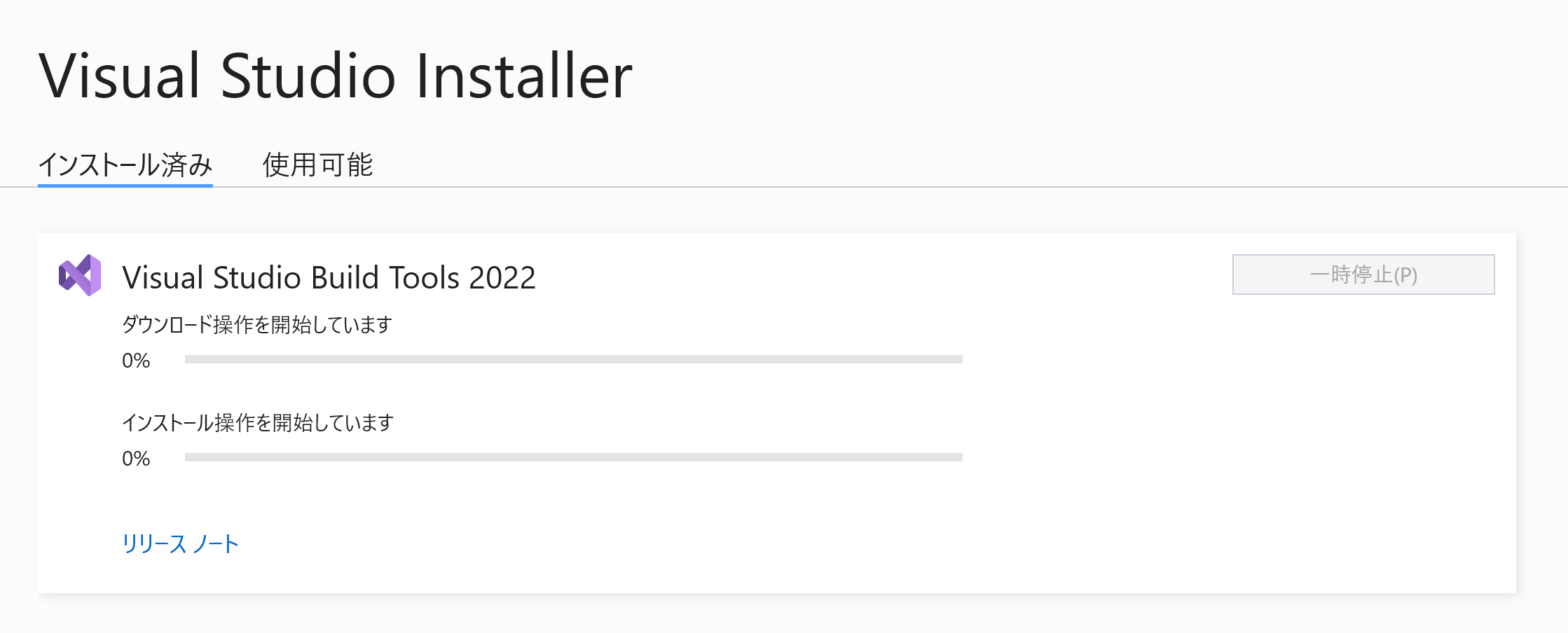
- 「C++ によるデスクトップ開発」をクリック.そして,画面右側の「インストール」の詳細で「v143 ビルドツール用 C++/CLI サポート(最新)」,「ATL」,「MFC」をチェックする.その後,「変更」をクリック.
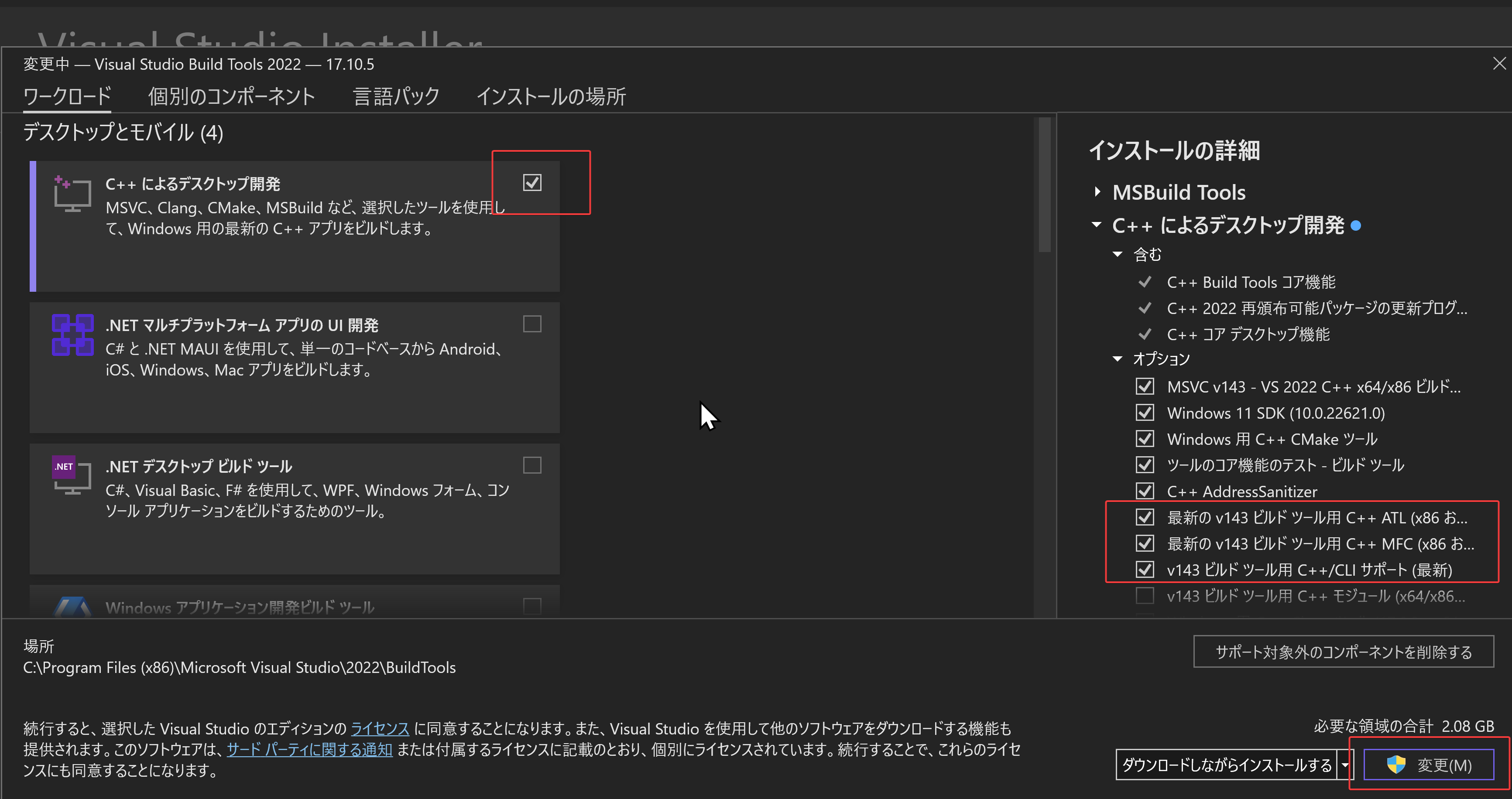
- Visual Studio Installer の起動
Visual Studio のインストール(Windows 上)
- Windows で,管理者権限でコマンドプロンプトを起動(手順:Windowsキーまたはスタートメニュー >
cmdと入力 > 右クリック > 「管理者として実行」)。次のコマンドを実行
- 管理者権限でコマンドプロンプトを起動(手順:Windowsキーまたはスタートメニュー >
cmdと入力 > 右クリック > 「管理者として実行」)。 - インストールコマンドの実行
winget install Microsoft.VisualStudio.2022.Community --scope machine --override "--add Microsoft.VisualStudio.Workload.NativeDesktop Microsoft.VisualStudio.ComponentGroup.NativeDesktop.Core Microsoft.VisualStudio.Component.VC.CLI.Support Microsoft.VisualStudio.Component.CoreEditor Microsoft.VisualStudio.Component.NuGet Microsoft.VisualStudio.Component.Roslyn.Compiler Microsoft.VisualStudio.Component.TextTemplating Microsoft.VisualStudio.Component.Windows.SDK.Latest Microsoft.VisualStudio.Component.VC.Tools.x86.x64 Microsoft.VisualStudio.Component.VC.ATL Microsoft.VisualStudio.Component.VC.ATLMFC" winget install Microsoft.VisualStudio.2022.Community --scope machine Microsoft.VCRedist.2015+.x64
インストールされるコンポーネントの説明:
NativeDesktop:C++によるデスクトップアプリケーション開発のためのワークロード一式NativeDesktop.Core:C++デスクトップ開発に必要な基本コンポーネント群VC.CLI.Support:マネージドコードとネイティブコードの統合開発を可能にするC++/CLIサポートCoreEditor:コード編集,デバッグ,検索などの基本機能を提供するVisual StudioのコアエディタNuGet:.NETライブラリの依存関係を管理するパッケージ管理システムWindows.SDK.Latest:Windows 向けアプリケーション開発用SDK(Software Development Kit)VC.Tools.x86.x64:32ビット及び64ビット向けC++コンパイラとビルドツールVC.ATL:Windowsコンポーネント開発用のActive Template LibraryVC.ATLMFC:デスクトップアプリケーション開発用のMicrosoft Foundation Class Library
システム要件と注意事項:
- 管理者権限でのインストールが必須
- 必要ディスク容量:10GB以上
- 推奨メモリ:8GB以上のRAM
- インストール過程でシステムの再起動が要求される可能性がある
- 安定したインターネット接続環境が必要
追加のコンポーネントが必要な場合は,Visual Studio Installerを使用して個別にインストールすることが可能である.
- インストール完了の確認
winget list Microsoft.VisualStudio.2022.Community
トラブルシューティング:
インストール失敗時は,以下のログファイルを確認:
%TEMP%\dd_setup_<timestamp>.log %TEMP%\dd_bootstrapper_<timestamp>.log
- 管理者権限でコマンドプロンプトを起動(手順:Windowsキーまたはスタートメニュー >
- Visual Studio での C++ によるデスクトップ開発,CLI のインストール(Windows 上)
- Visual Studio Installer の起動
起動方法: スタートメニューの「Visual Studio Installer」を選ぶ.
- Visual Studio Community 2022 で「変更」を選ぶ.
- 「C++ によるデスクトップ開発」をチェック.そして,画面右側の「インストール」の詳細で「v143 ビルドツール用 C++/CLI サポート(最新)」をチェックする.その後,「インストール」をクリック.
- Visual Studio Installer の起動
Python 3.12,Git のインストール(Windows 上)
Pythonは,プログラミング言語の1つ. Gitは,分散型のバージョン管理システム.
【手順】
- Windows で,管理者権限でコマンドプロンプトを起動(手順:Windowsキーまたはスタートメニュー >
cmdと入力 > 右クリック > 「管理者として実行」)。次のコマンドを実行
次のコマンドは,Python ランチャーとPython 3.12とGitをインストールし,Gitにパスを通すものである.
次のコマンドでインストールされるGitは 「git for Windows」と呼ばれるものであり, Git,MinGW などから構成されている.
reg add "HKLM\SYSTEM\CurrentControlSet\Control\FileSystem" /v LongPathsEnabled /t REG_DWORD /d 1 /f REM Python, Git をシステム領域にインストール winget install --scope machine --id Python.Python.3.12 --id Python.Launcher --id Git.Git -e --silent REM Python のパス set "INSTALL_PATH=C:\Program Files\Python312" echo "%PATH%" | find /i "%INSTALL_PATH%" >nul if errorlevel 1 setx PATH "%PATH%;%INSTALL_PATH%" /M >nul echo "%PATH%" | find /i "%INSTALL_PATH%\Scripts" >nul if errorlevel 1 setx PATH "%PATH%;%INSTALL_PATH%\Scripts" /M >nul REM Git のパス set "NEW_PATH=C:\Program Files\Git\cmd" if exist "%NEW_PATH%" echo "%PATH%" | find /i "%NEW_PATH%" >nul if exist "%NEW_PATH%" if errorlevel 1 setx PATH "%PATH%;%NEW_PATH%" /M >nul
【関連する外部ページ】
- Python の公式ページ: https://www.python.org/
- Git の公式ページ: https://git-scm.com/
【サイト内の関連ページ】
【関連項目】 Python, Git バージョン管理システム, Git の利用
Build Tools for Visual Studio 2022,NVIDIA ドライバ,NVIDIA CUDA ツールキット 11.8,NVIDIA cuDNN 8.9.7 のインストール(Windows 上)
【サイト内の関連ページ】 NVIDIA グラフィックスボードを搭載しているパソコンの場合には, NVIDIA ドライバ, NVIDIA CUDA ツールキット, NVIDIA cuDNN のインストールを行う.
- Windows での Build Tools for Visual Studio 2022 のインストール: 別ページ »で説明
- Windows での NVIDIA ドライバ,NVIDIA CUDA ツールキット 11.8,NVIDIA cuDNN v8.9.7 のインストール手順: 別ページ »で説明
【関連する外部ページ】
- Build Tools for Visual Studio 2022 (ビルドツール for Visual Studio 2022)の公式ダウンロードページ: https://visualstudio.microsoft.com/ja/visual-cpp-build-tools/
- NVIDIA ドライバのダウンロードの公式ページ: https://www.nvidia.co.jp/Download/index.aspx?lang=jp
- NVIDIA CUDA ツールキットのアーカイブの公式ページ: https://developer.nvidia.com/cuda-toolkit-archive
- NVIDIA cuDNN のダウンロードの公式ページ: https://developer.nvidia.com/cudnn
PyTorch のインストール(Windows 上)
- Windows で,管理者権限でコマンドプロンプトを起動(手順:Windowsキーまたはスタートメニュー >
cmdと入力 > 右クリック > 「管理者として実行」)。 - PyTorch のページを確認
- 次のようなコマンドを実行(実行するコマンドは,PyTorch のページの表示されるコマンドを使う).
次のコマンドを実行することにより, PyTorch 2.3 (NVIDIA CUDA 11.8 用)がインストールされる. 但し,Anaconda3を使いたい場合には別手順になる.
事前に NVIDIA CUDA のバージョンを確認しておくこと(ここでは,NVIDIA CUDA ツールキット 11.8 が前もってインストール済みであるとする).
PyTorch で,GPU が動作している場合には,「torch.cuda.is_available()」により,True が表示される.
python -m pip install -U --ignore-installed pip python -m pip uninstall -y torch torchvision torchaudio torchtext xformers python -m pip install -U torch torchvision torchaudio numpy --index-url https://download.pytorch.org/whl/cu118 python -c "import torch; print(torch.__version__, torch.cuda.is_available())"
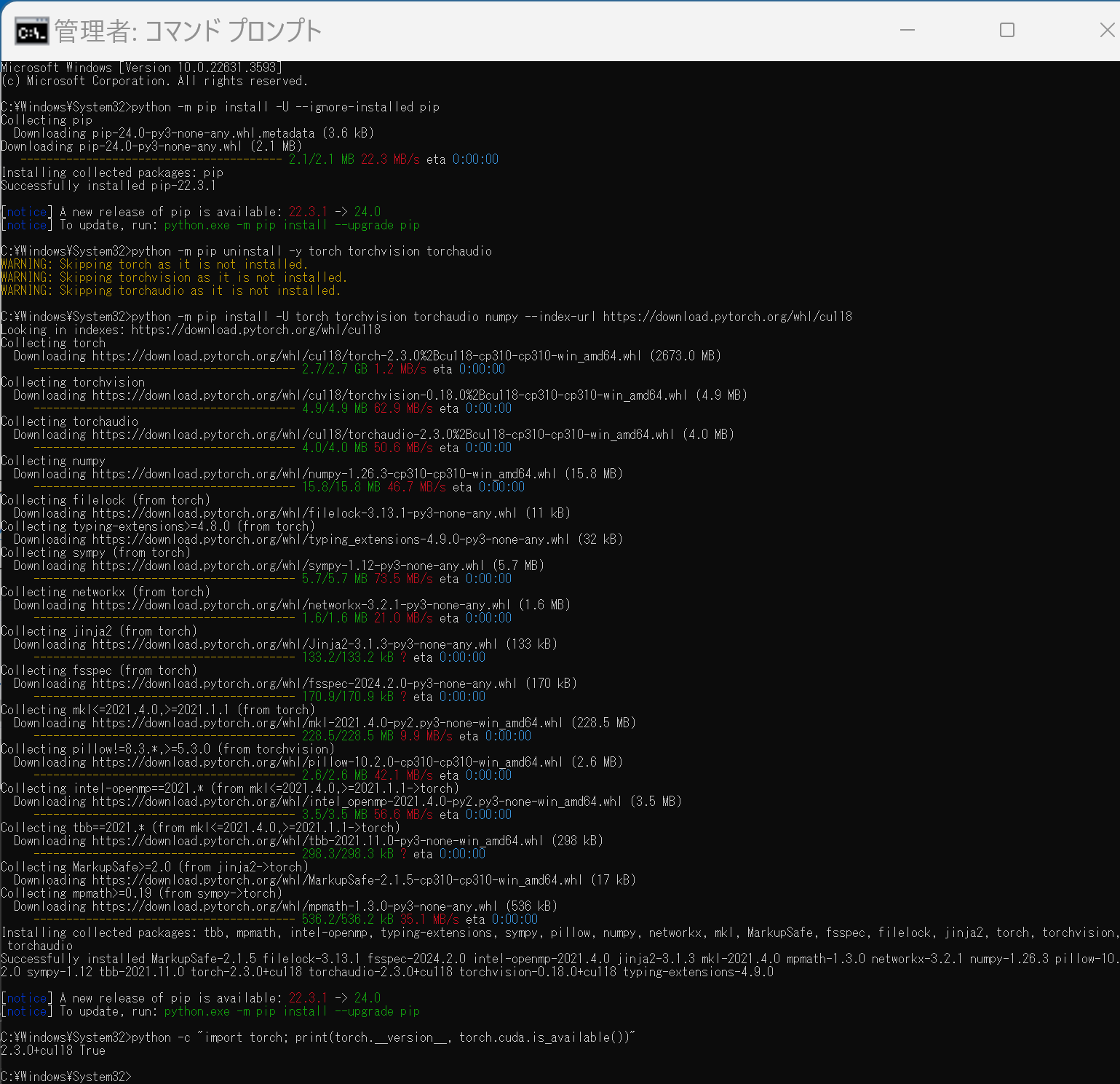
Anaconda3を使いたい場合には, Anaconda プロンプト (Anaconda Prompt) を管理者として実行し, 次のコマンドを実行する. (PyTorch と NVIDIA CUDA との連携がうまくいかない可能性があるため,Anaconda3を使わないことも検討して欲しい).
conda install -y pytorch torchvision torchaudio pytorch-cuda=11.8 cudnn -c pytorch -c nvidia py -c "import torch; print(torch.__version__, torch.cuda.is_available())"
【サイト内の関連ページ】
【関連する外部ページ】
MMDetection,MMSegmentation のインストール(Windows 上)
インストールの方法は複数ある. ここでは, NVIDIA CUDA ツールキットを使うことも考え, インストールしやすい方法として,ソースコードからビルドしてインストールする方法を案内している.
- Windows で,管理者権限でコマンドプロンプトを起動(手順:Windowsキーまたはスタートメニュー >
cmdと入力 > 右クリック > 「管理者として実行」)。 - PyTorch がインストールできていることを確認するために,PyTorch のバージョンを表示
python -c "import torch; TORCH_VERSION = '.'.join(torch.__version__.split('.')[:2]); print(TORCH_VERSION)"
- PyTorch が NVIDIA CUDA ツールキットを認識できていることを確認するために,
PyTorch が認識しているNVIDIA CUDA ツールキット のバージョンを表示
このとき,実際には 11.8 をインストールしているのに,「cu117」のように古いバージョンが表示されることがある.このような場合は,気にせずに続行する.
python -c "import torch; CUDA_VERSION = torch.__version__.split('+')[-1]; print(CUDA_VERSION)"
- 環境変数 PROTOCOL_BUFFERS_PYTHON_IMPLEMENTATION の設定
システム環境変数 PROTOCOL_BUFFERS_PYTHON_IMPLEMENTATION に「python」を設定するために, コマンドプロンプトで,次のコマンドを実行する.
この設定は,MMSegmentation 利用のときのエラーの回避のためである.関連する外部ページ: https://developers.google.com/protocol-buffers/docs/news/2022-05-06#python-updates
powershell -command "[System.Environment]::SetEnvironmentVariable(\"PROTOCOL_BUFFERS_PYTHON_IMPLEMENTATION\", \"python\", \"Machine\")"

- MIM,MMDetection, MMSegmentation のインストール
インストール手順は, https://mmdetection.readthedocs.io/en/latest/get_started.html による.
python -m pip install -U --ignore-installed pip python -m pip uninstall -y openmim mmdet mmseg mmsegmentation mmcv mmcv-full opencv-python opencv-python-headless python -m pip install -U openmim opencv-python cd /d c:%HOMEPATH% rmdir /s /q mmdetection git clone https://github.com/open-mmlab/mmdetection.git cd mmdetection mim uninstall -y mmdet pip install -r requirements.txt mim install -e . mim list python -c "import mmdet; print(mmdet.__version__)"
(途中省略)
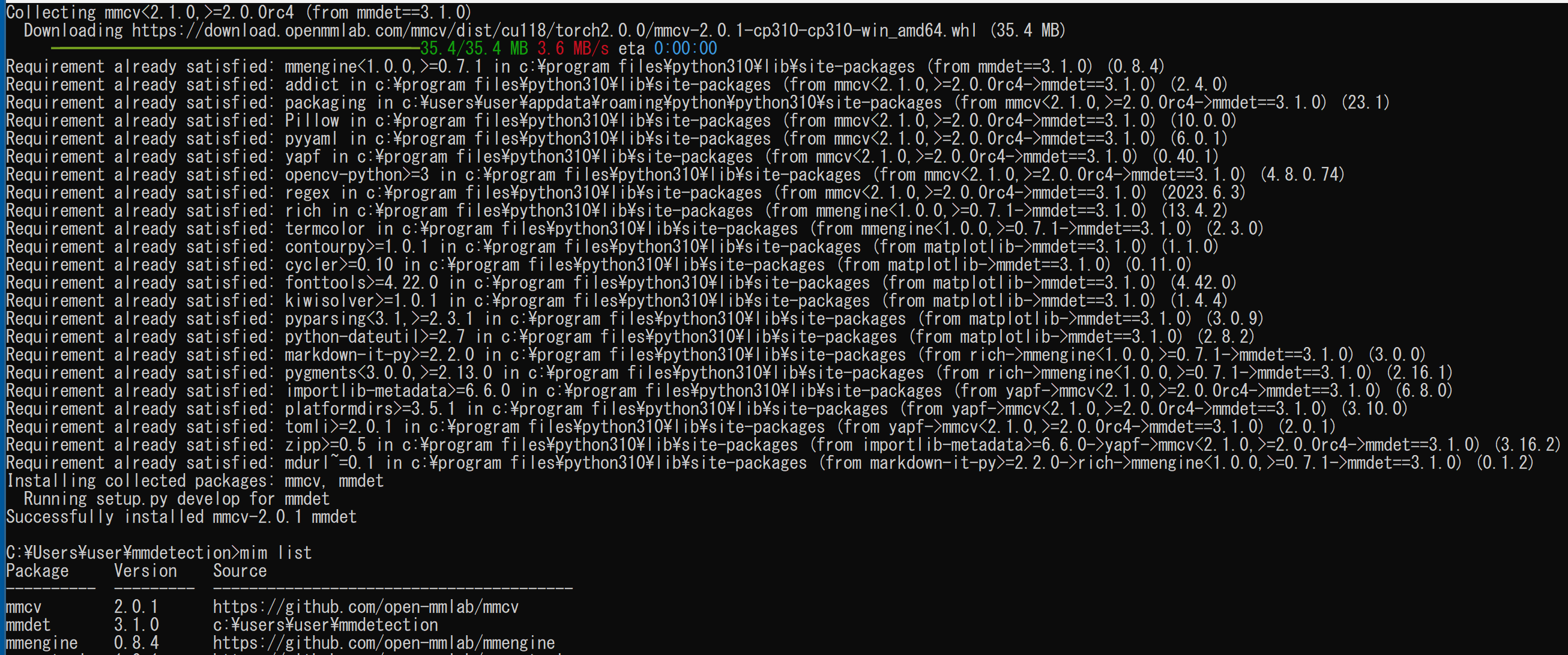
- MMSegmentation のインストール
https://mmdetection.readthedocs.io/en/latest/get_started.html による.
cd /d c:%HOMEPATH% rmdir /s /q mmsegmentation git clone https://github.com/open-mmlab/mmsegmentation.git cd mmsegmentation mim uninstall -y mmsegmentation pip install -r requirements.txt mim install -e . mim list python -c "import mmseg; print(mmseg.__version__)"
(途中省略)
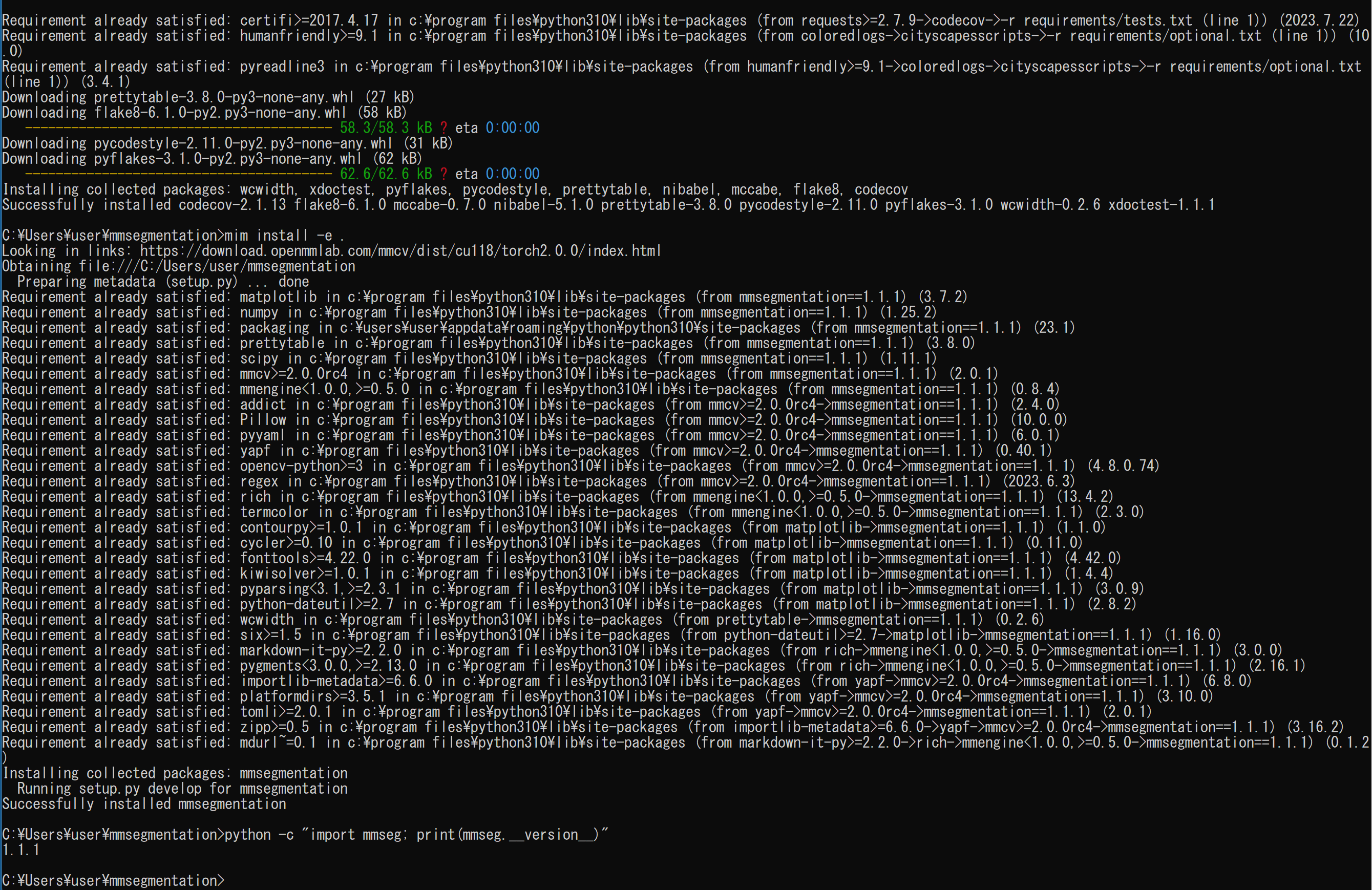
- mim list の実行により確認
mim list

- MMDetection, MMSegmentation をインストールできたことの確認
エラーメッセージが出ないこと.
python -c "import mmdet; print(mmdet.__version__)" python -c "import mmseg; print(mmseg.__version__)"

MMSegmentation を用いた画像のセグメンテーションの実行(Windows 上)
画像のセマンティック・セグメンテーション(CityScapes, DeepLabV3plus, R-101-D8 を使用)
- Windows のコマンドプロンプトを開く
- 事前学習済みモデルのダウンロード
Cityscapes データセットを用いての事前学習済みモデルを使用している.
MMSegmentation の model zoo のページ: https://github.com/open-mmlab/mmsegmentation/blob/master/docs/en/model_zoo.md
ここではCityScapes, DeepLabV3plus, R-101-D8 を選ぶことにする. Cityscapes データセットで学習済みのモデルである.
- deeplabv3plus_r101-d8_4xb2-80k_cityscapes-512x1024.py
- deeplabv3plus_r101-d8_512x1024_80k_cityscapes_20200606_114143-068fcfe9.pth
次のコマンドを実行する.dir /w の実行により,ファイル名「deeplabv3plus_r101-d8_512x1024_80k_cityscapes_20200606_114143-068fcfe9.pth」を確認する.
cd /d c:%HOMEPATH%\mmsegmentation mkdir checkpoints cd checkpoints mim download mmsegmentation --config deeplabv3plus_r101-d8_4xb2-80k_cityscapes-512x1024 --dest . dir /w
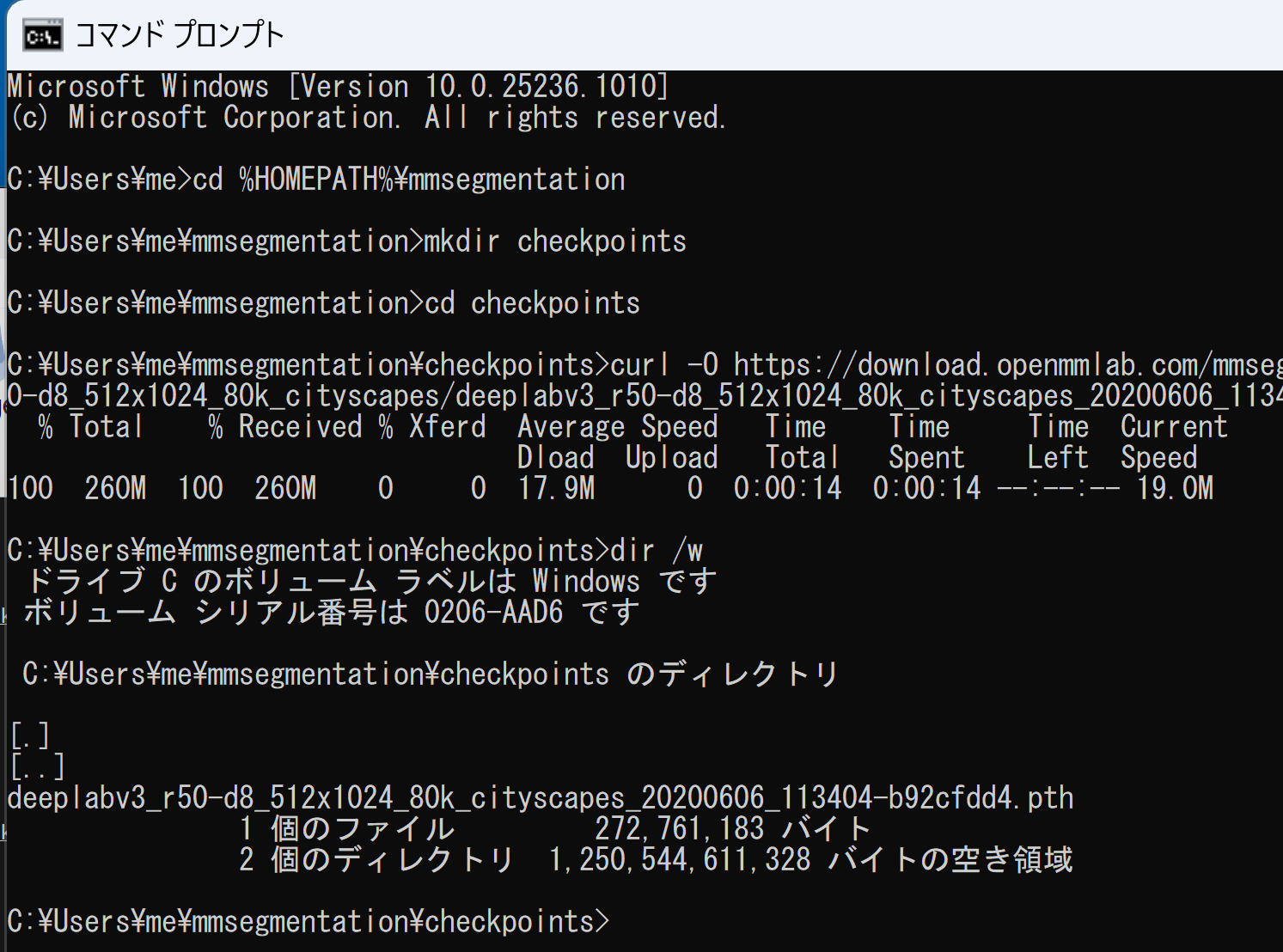
- Python プログラムの実行
Python プログラムの実行
- Windows では python (Python ランチャーは py)
- Ubuntu では python3
Python 開発環境(Jupyter Qt Console, Jupyter ノートブック (Jupyter Notebook), Jupyter Lab, Nteract, Spyder, PyCharm, PyScripterなど)も便利である.
Python のまとめ: 別ページ »にまとめ
python
- 次の Python プログラムを実行する.
セマンティック・セグメンテーションを行う.
プログラムは,公式ページ https://mmsegmentation.readthedocs.io/en/latest/get_started.html のものを書き換えて使用.
このプログラムは、MMSegmentationライブラリを使用して、事前学習済みのDeepLabV3+モデルを初期化し、指定された画像に対してセグメンテーションを実行します。推論結果は、元の画像に重ねて表示されます。
import os import torch from mmseg.apis import init_model, inference_model, show_result_pyplot import mmcv def initialize_model(config_file, checkpoint_file, device): model = init_model(config_file, checkpoint_file, device=device) return model def load_image(img_path): if img_path.startswith('http'): img = mmcv.imread(img_path) else: img = img_path return img def perform_inference(model, img): result = inference_model(model, img) return result def main(): os.chdir((os.getenv('HOMEPATH') + '\\' + 'mmsegmentation')) device = torch.device('cuda' if torch.cuda.is_available() else 'cpu') config_file = 'configs/deeplabv3plus/deeplabv3plus_r101-d8_4xb2-80k_cityscapes-512x1024.py' checkpoint_file = 'checkpoints/deeplabv3plus_r101-d8_512x1024_80k_cityscapes_20200606_114143-068fcfe9.pth' model = initialize_model(config_file, checkpoint_file, device) img_path = 'https://raw.githubusercontent.com/open-mmlab/mmsegmentation/main/demo/demo.png' img = load_image(img_path) result = perform_inference(model, img) show_result_pyplot(model, img, result, opacity=0.5) if __name__ == '__main__': main()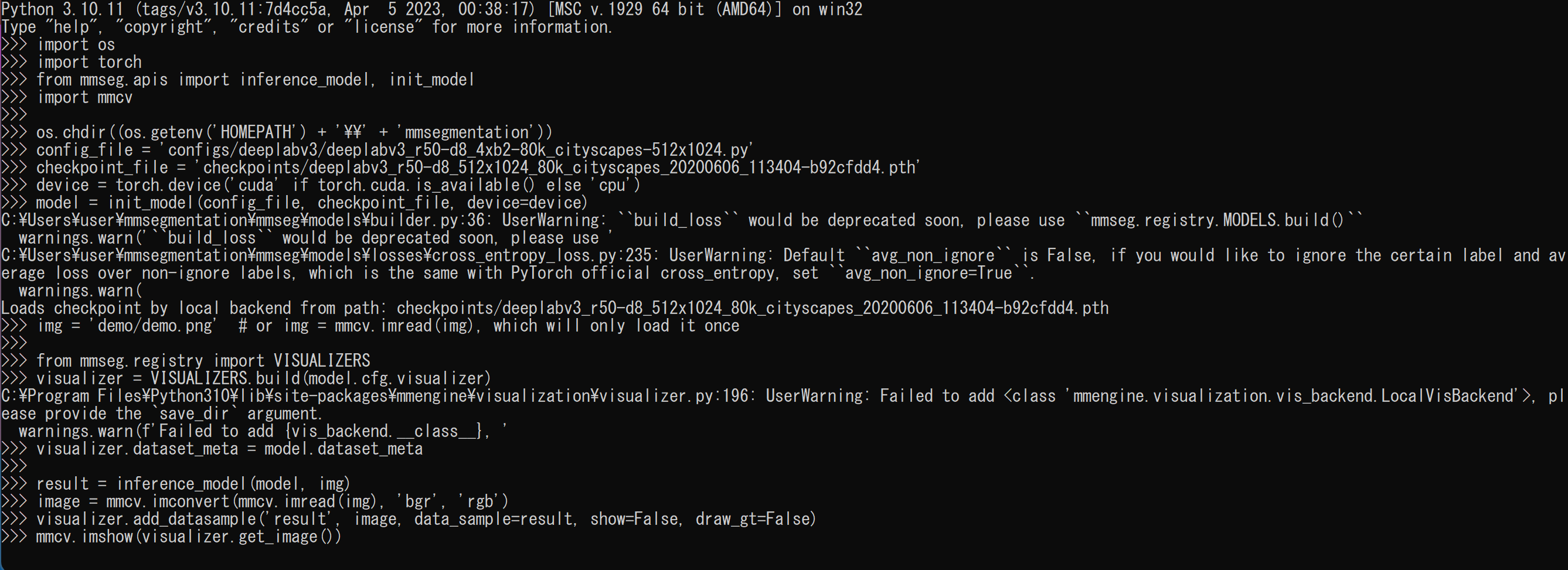
- 結果が表示される
エラーメッセージが出ないことを確認.

動画ファイルのセマンティック・セグメンテーション
- 動画ファイル video.mp4 を %HOMEPATH%\mmsegmentation に置く
- 動画ファイルのセグメンテーションを行う Python プログラム
次の Python プログラムを実行する.mmcv を用いた表示を行うので,Jupyter QtConsole や Jupyter ノートブック (Jupyter Notebook) の利用が便利である.
import os import torch from mmseg.apis import inference_model, init_model, show_result_pyplot import mmcv os.chdir((os.getenv('HOMEPATH') + '\\' + 'mmsegmentation')) config_file = 'configs/deeplabv3/deeplabv3_r50-d8_4xb2-80k_cityscapes-512x1024.py' checkpoint_file = 'checkpoints/deeplabv3_r50-d8_512x1024_80k_cityscapes_20200606_113404-b92cfdd4.pth' device = torch.device('cuda' if torch.cuda.is_available() else 'cpu') model = init_model(config_file, checkpoint_file, device=device) video = mmcv.VideoReader(os.getenv('HOMEPATH') + '\\' + 'mmdetection' + '\\' + 'demo' + '\\' + 'demo.mp4') from mmseg.registry import VISUALIZERS visualizer = VISUALIZERS.build(model.cfg.visualizer) visualizer.dataset_meta = model.dataset_meta for frame in video: result = inference_model(model, frame) image = mmcv.imconvert(frame, 'bgr', 'rgb') visualizer.add_datasample('result', image, data_sample=result, show=False, draw_gt=False) mmcv.imshow(visualizer.get_image(), wait_time=100)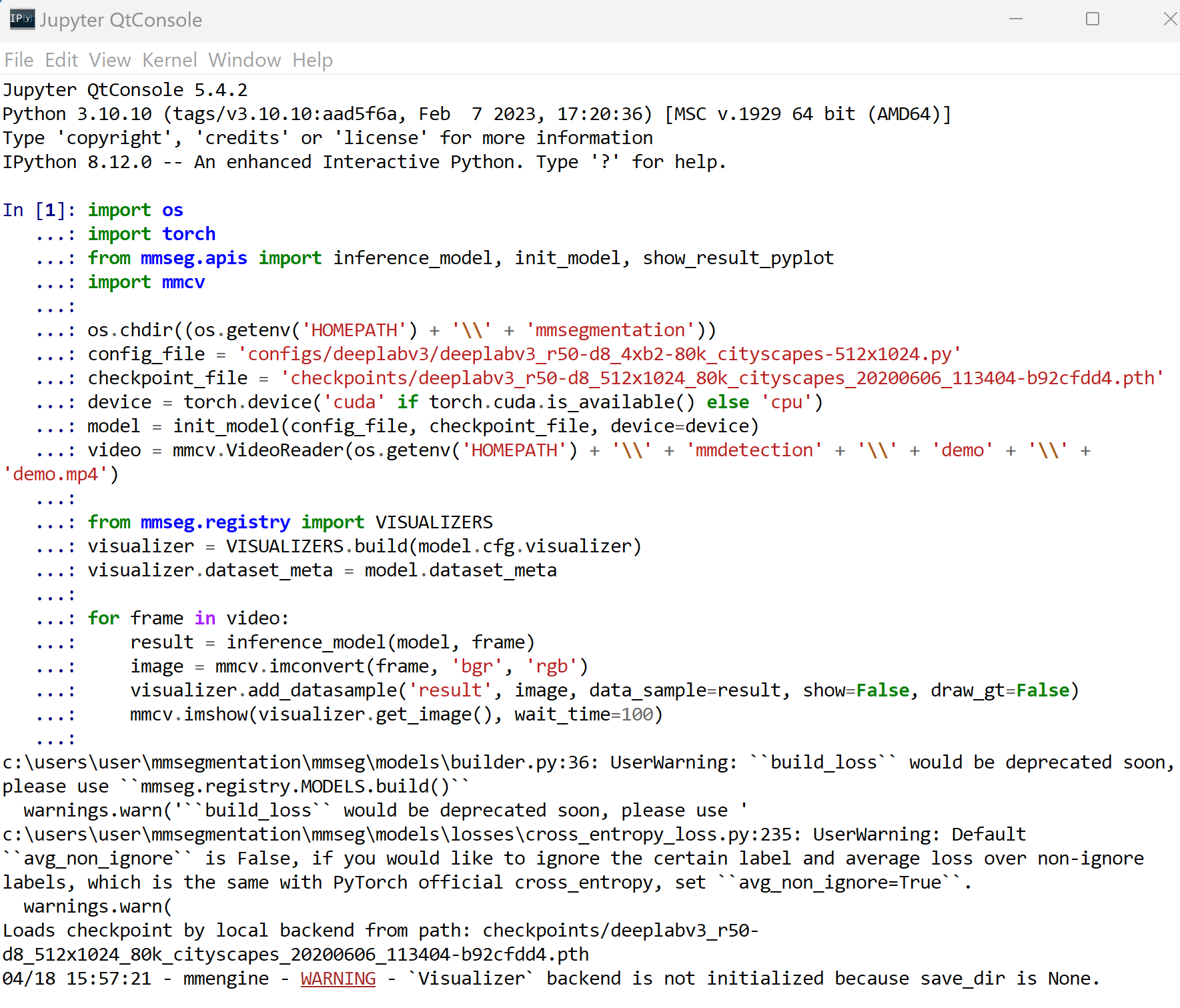
- 結果が表示される
エラーメッセージが出ないことを確認.
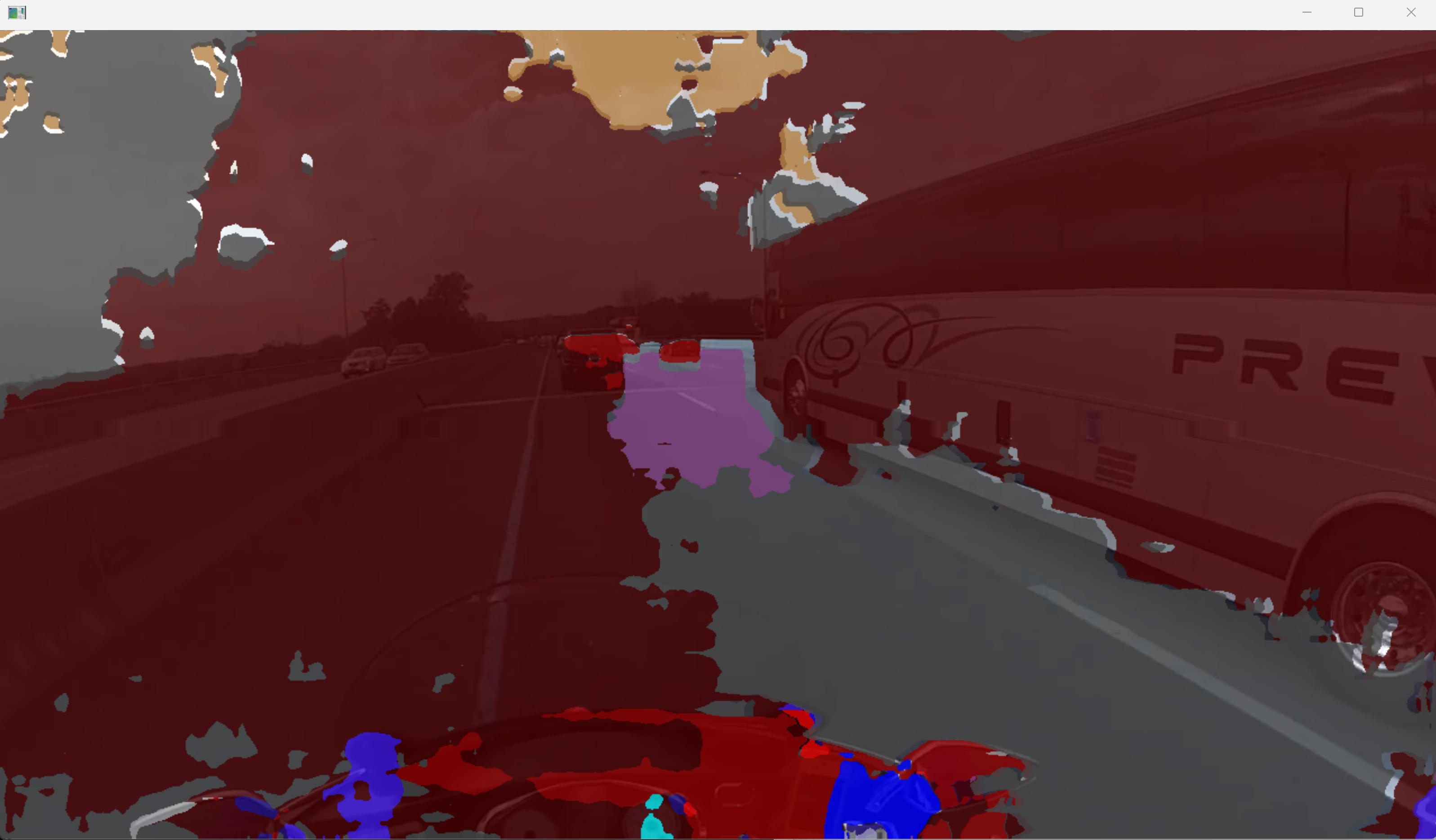
パソコンのカメラのセマンティック・セグメンテーション
- 事前学習済みモデルのダウンロード
Cityscapes データセットを用いての事前学習済みモデルを使用している.
MMSegmentation の model zoo のページ: https://github.com/open-mmlab/mmsegmentation/blob/master/docs/en/model_zoo.md
ここではCityScapes, DeepLabV3, R-50-D8 を選ぶことにする. Cityscapes データセットで学習済みのモデルである.
- configs/deeplabv3/deeplabv3_r50-d8_512x1024_80k_cityscapes.py
- https://download.openmmlab.com/mmsegmentation/v0.5/deeplabv3/deeplabv3_r50-d8_512x1024_80k_cityscapes/deeplabv3_r50-d8_512x1024_80k_cityscapes_20200606_113404-b92cfdd4.pth
次のコマンドを実行する.
cd /d c:%HOMEPATH%\mmsegmentation mkdir checkpoints cd checkpoints curl -O https://download.openmmlab.com/mmsegmentation/v0.5/deeplabv3/deeplabv3_r50-d8_512x1024_80k_cityscapes/deeplabv3_r50-d8_512x1024_80k_cityscapes_20200606_113404-b92cfdd4.pth dir /w

- 動画ファイルのセグメンテーションを行う Python プログラム
次の Python プログラムを実行する.mmcv を用いた表示を行うので,Jupyter QtConsole や Jupyter ノートブック (Jupyter Notebook) の利用が便利である.
import os import torch import cv2 from mmseg.apis import inference_model, init_model, show_result_pyplot import mmcv os.chdir((os.getenv('HOMEPATH') + '\\' + 'mmsegmentation')) config_file = 'configs/deeplabv3/deeplabv3_r50-d8_4xb2-80k_cityscapes-512x1024.py' checkpoint_file = 'checkpoints/deeplabv3_r50-d8_512x1024_80k_cityscapes_20200606_113404-b92cfdd4.pth' device = torch.device('cuda' if torch.cuda.is_available() else 'cpu') model = init_model(config_file, checkpoint_file, device=device) video = mmcv.VideoReader(os.getenv('HOMEPATH') + '\\' + 'mmdetection' + '\\' + 'demo' + '\\' + 'demo.mp4') from mmseg.registry import VISUALIZERS visualizer = VISUALIZERS.build(model.cfg.visualizer) visualizer.dataset_meta = model.dataset_meta v = cv2.VideoCapture(0) while(v.isOpened()): r, f = v.read() if ( r == False ): break result = inference_model(model, f) image = mmcv.imconvert(f, 'bgr', 'rgb') visualizer.add_datasample('result', image, data_sample=result, show=False, draw_gt=False) mmcv.imshow(visualizer.get_image(), wait_time=100)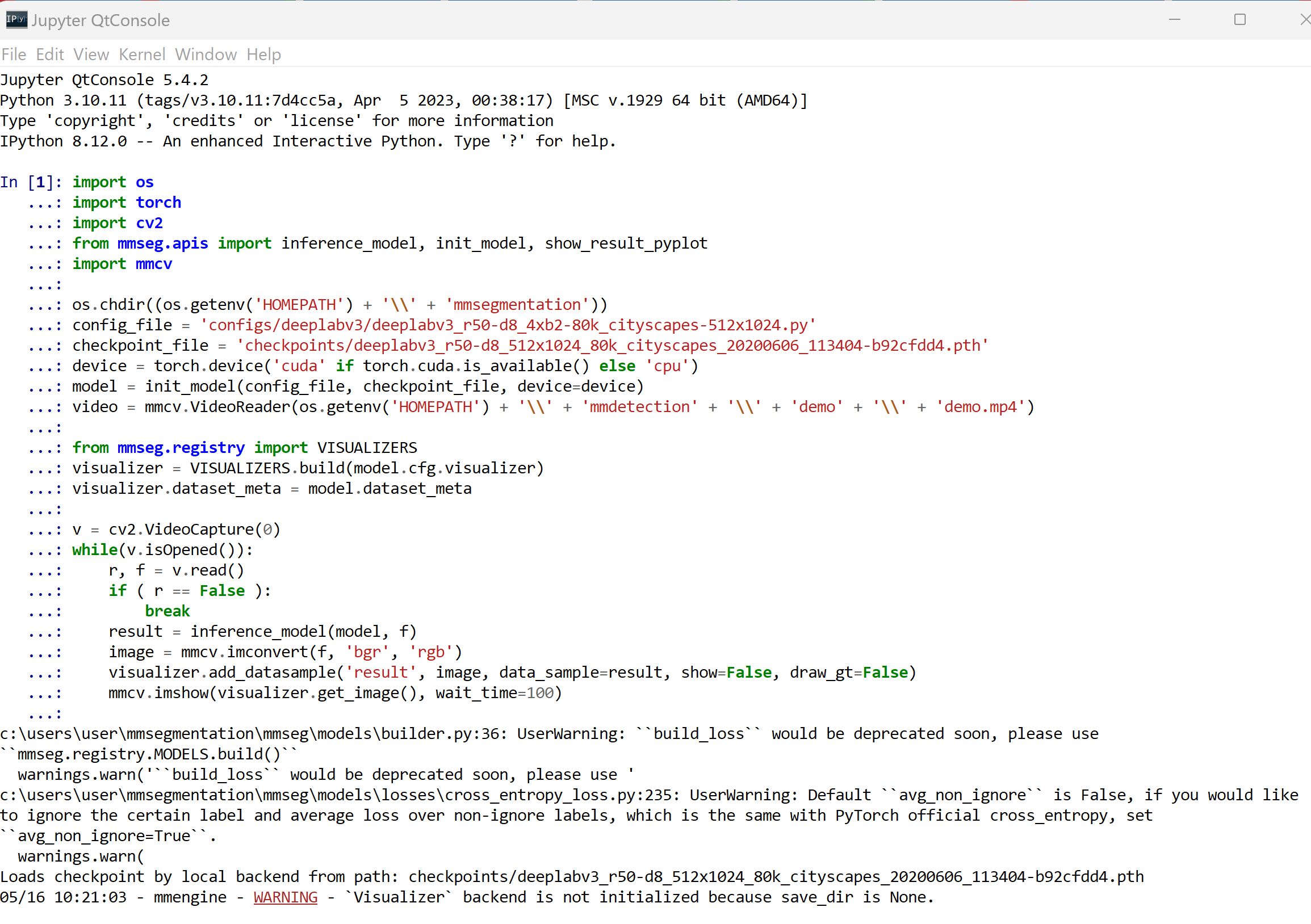
- 結果が表示される
エラーメッセージが出ないことを確認.
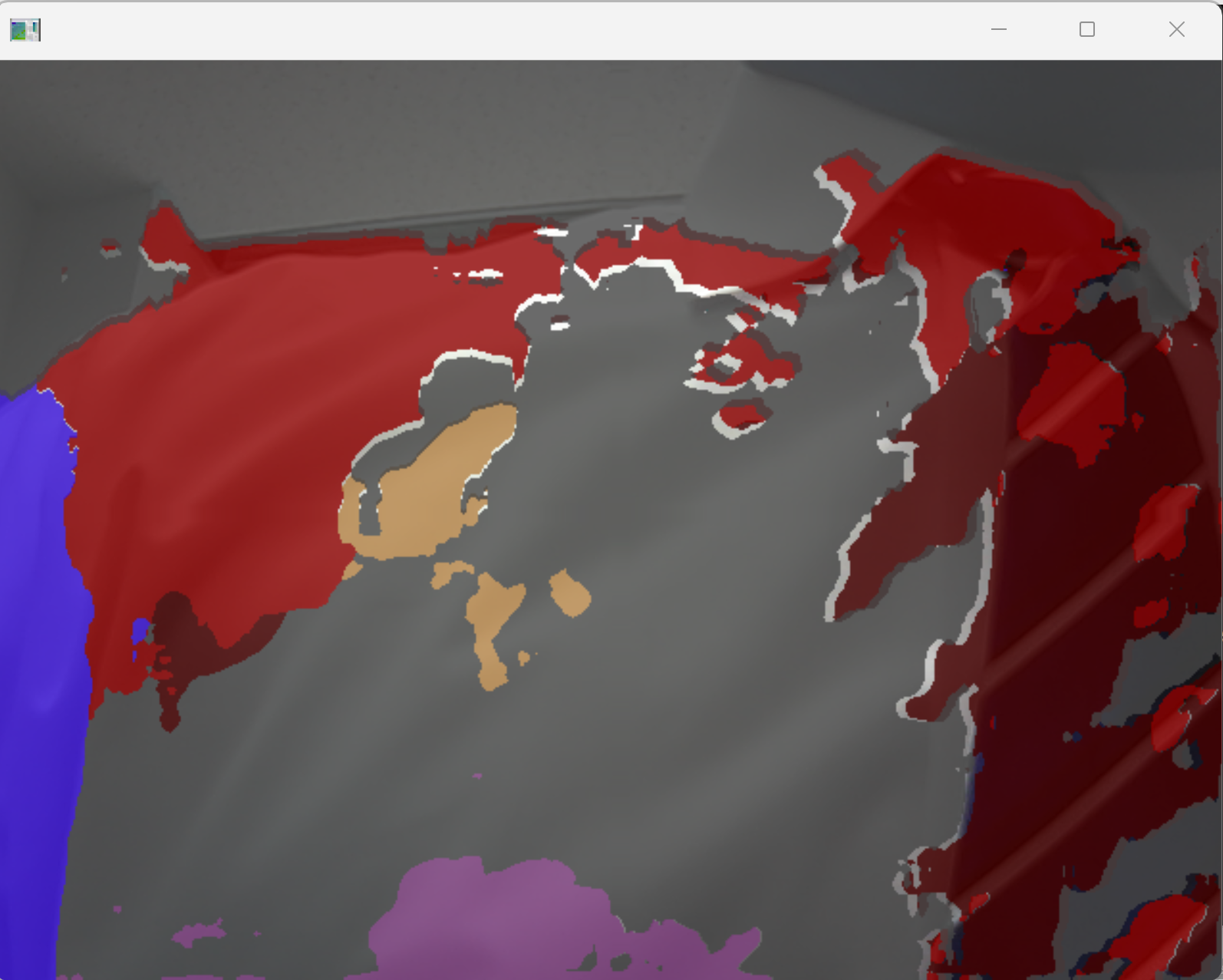
- 事前学習済みモデルのダウンロード
Pascal VOC データセットを用いての事前学習済みモデルを使用している.
MMSegmentation の model zoo のページ: https://github.com/open-mmlab/mmsegmentation/blob/master/docs/en/model_zoo.md
ここではPascal VOC, DeepLabV3, R-50-D8 を選ぶことにする. Cityscapes データセットで学習済みのモデルである.
- configs/deeplabv3plus/deeplabv3plus_r50-d8_4xb4-80k_ade20k-512x512.py
- https://download.openmmlab.com/mmsegmentation/v0.5/deeplabv3plus/deeplabv3plus_r50-d8_512x512_80k_ade20k/deeplabv3plus_r50-d8_512x512_80k_ade20k_20200614_185028-bf1400d8.pth
次のコマンドを実行する.
cd /d c:%HOMEPATH%\mmsegmentation mkdir checkpoints cd checkpoints curl -O https://download.openmmlab.com/mmsegmentation/v0.5/deeplabv3plus/deeplabv3plus_r50-d8_512x512_80k_ade20k/deeplabv3plus_r50-d8_512x512_80k_ade20k_20200614_185028-bf1400d8.pth dir /w
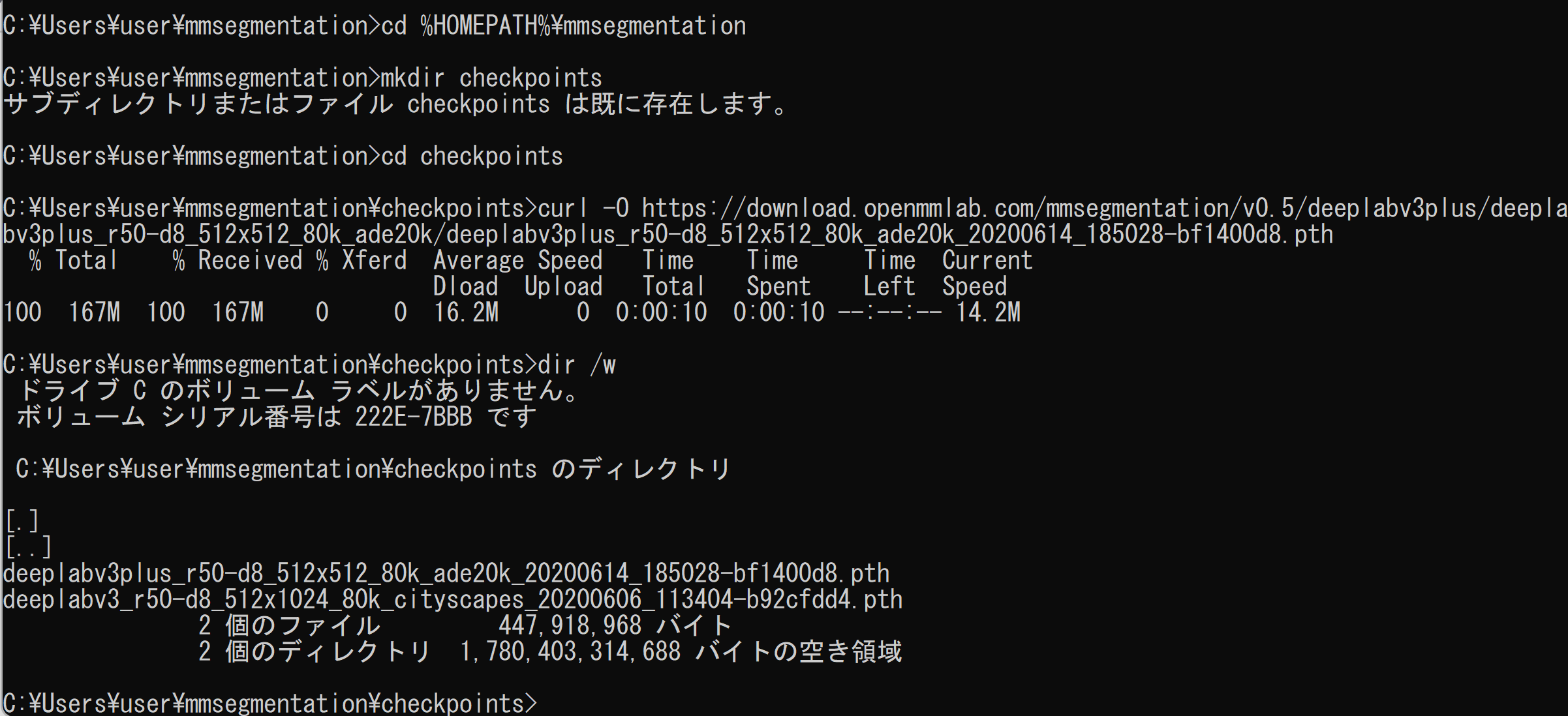
- 動画ファイルのセグメンテーションを行う Python プログラム
次の Python プログラムを実行する.mmcv を用いた表示を行うので,Jupyter QtConsole や Jupyter ノートブック (Jupyter Notebook) の利用が便利である.
import os import torch import cv2 from mmseg.apis import inference_model, init_model, show_result_pyplot import mmcv os.chdir((os.getenv('HOMEPATH') + '\\' + 'mmsegmentation')) config_file = 'configs/deeplabv3plus/deeplabv3plus_r50-d8_4xb4-80k_ade20k-512x512.py' checkpoint_file = 'checkpoints/deeplabv3plus_r50-d8_512x512_80k_ade20k_20200614_185028-bf1400d8.pth' device = torch.device('cuda' if torch.cuda.is_available() else 'cpu') model = init_model(config_file, checkpoint_file, device=device) video = mmcv.VideoReader(os.getenv('HOMEPATH') + '\\' + 'mmdetection' + '\\' + 'demo' + '\\' + 'demo.mp4') from mmseg.registry import VISUALIZERS visualizer = VISUALIZERS.build(model.cfg.visualizer) visualizer.dataset_meta = model.dataset_meta v = cv2.VideoCapture(0) while(v.isOpened()): r, f = v.read() if ( r == False ): break result = inference_model(model, f) image = mmcv.imconvert(f, 'bgr', 'rgb') visualizer.add_datasample('result', image, data_sample=result, show=False, draw_gt=False) mmcv.imshow(visualizer.get_image(), wait_time=100)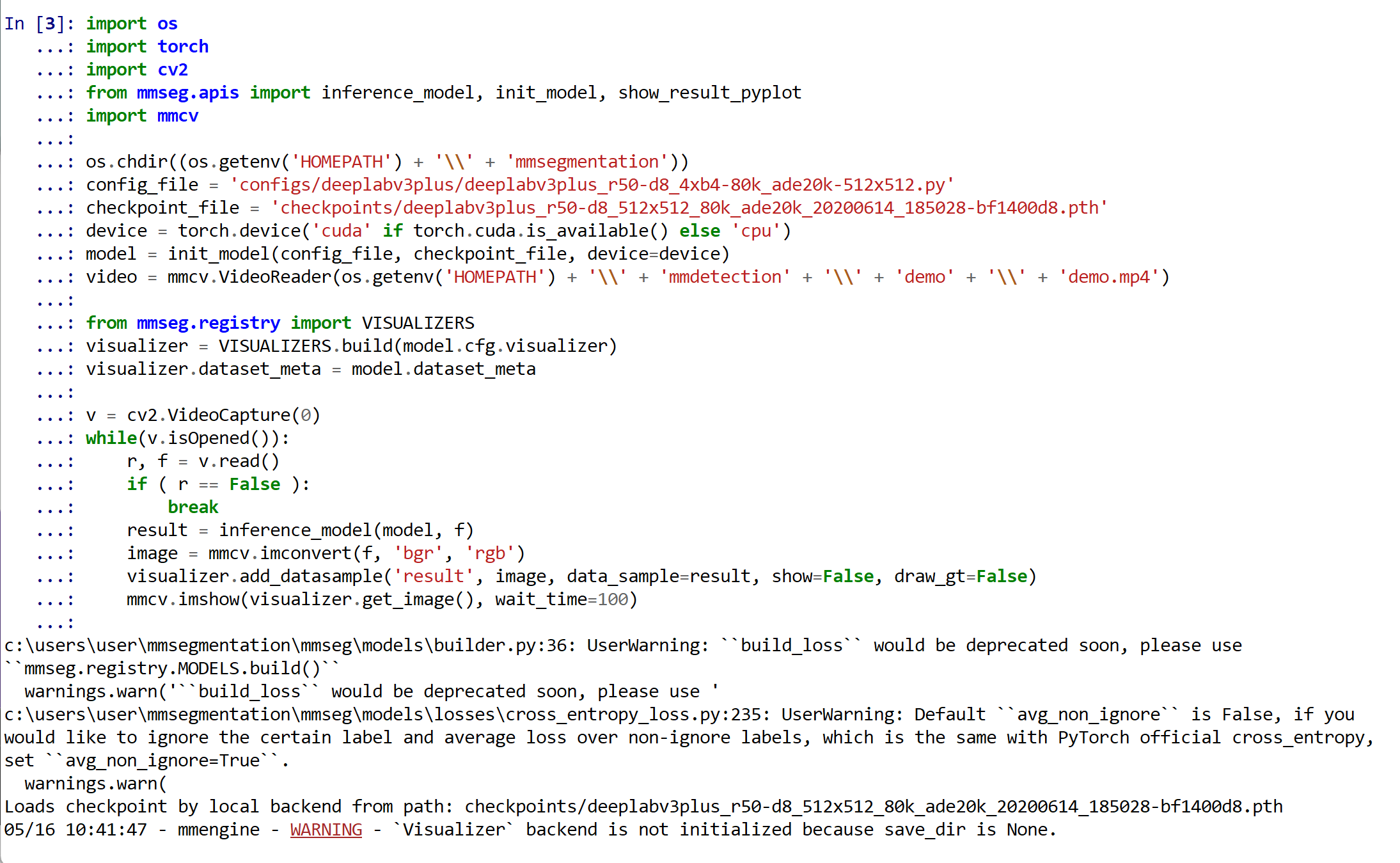
- 結果が表示される
エラーメッセージが出ないことを確認.
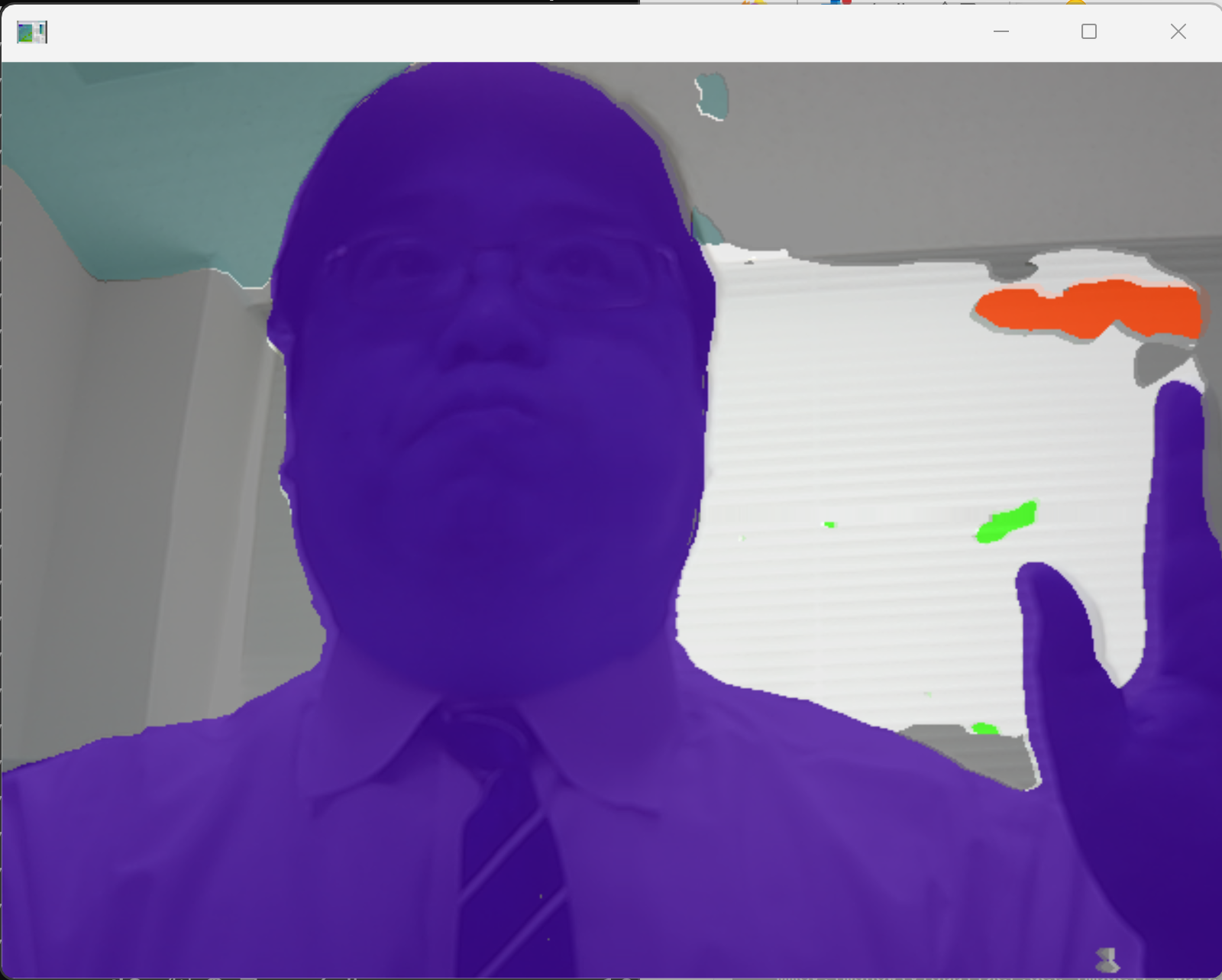
![[kaneko lab.]](https://www.kkaneko.jp/info/logo_png.png)